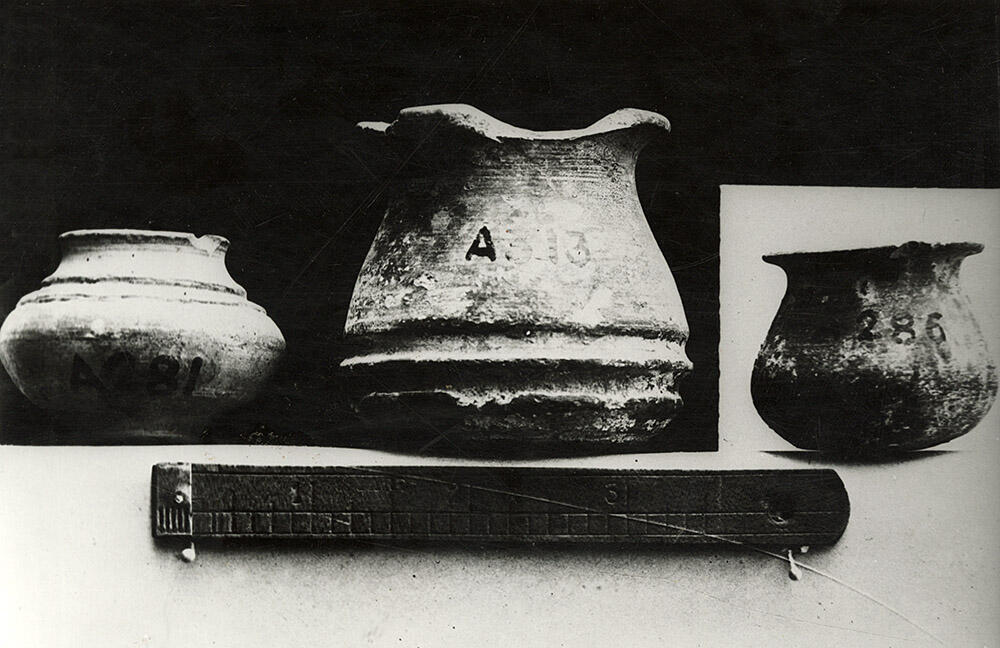Three more examples, all from Mound F, of what Daya Ram Sahni immediately identified as inkpots.
"The other portable antiquities recovered in this Mound F, though not numerous, all point to a high antiquity. A number of terracotta figurines were found in the early style of those from the oldest strata at Bhita and other sites, and a large of earthen vessels, from large chatis for storing water or grain down to tiny objects of domestic use, such as a contrivance for making twine, children’s toy carts, real mrichchhakatikas, ink-pots, etc., etc."
- John Marshall, Annual Report of the Director-General of Archaeology in India, 1920-21, p. 16.
"The vessel on the left is a small round bottomed cooking pot with double ridges at the shoulder. The middle vessel is a distinctive ridged vessel that is found at major Indus sites like Harappa and Mohenjodaro. The vessel on the right with the rounded base is not a normal Indus shape and may be a modern vessel. Modern pottery was often mixed with Harappan pottery during the looting of bricks."
- Jonathan Mark Kenoyer, 2021.
A. 281 [sic] Earthen bangle (diam. 2 5/8".
A. 313 Ink-pot (height 2 1/4").
A 286 Ink-pot (height 1 1/4") of black clay.
[Appendix D] 2754. Three earthenware inkpots (No. A 281, 286 and No. 313).
[Original caption] Three earthenware inkpots Nos. A 281 [sic], 286, 313.

